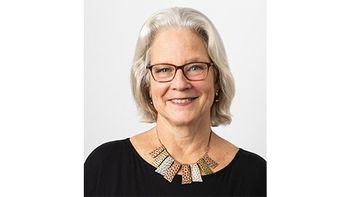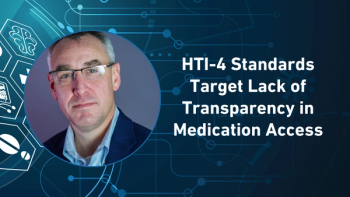
- Pharmaceutical Commerce - October 2024
- Volume 19
- Issue 5
The Latest Surrounding Rising Medicare Part D Premiums
Why looming benefit changes—and the resulting unintended consequences—are a concern for patients.
To lower out-of-pocket (OOP) costs of prescription medications for people enrolled in Medicare and to reduce drug spending by the federal government, several key changes to the Medicare Part D benefit were made possible with the passage of the Inflation Reduction Act (IRA) in 2022. Two of the IRA’s most important provisions will go into effect on Jan. 1, 2025—a $2,000 cap on OOP drug spending for all individuals with a Part D plan, and the opportunity to opt-in to the Medicare Prescription Payment Plan and spread costs throughout the year. This program is being offered by Part D plan sponsors.
As a result of these Part D benefit changes and the increased financial burden on Part D plans, many are concerned about the unintended consequences on patients, such as the potential for increased Part D premiums. The IRA does address this concern by implementing a premium stabilization program, beginning this year through 2029, limiting increases in the Part D base beneficiary premium to 6% growth each year. For 2025, the base premium is $36.78, an increase of $2.08 or 6% over the 2024 base premium. It is important to note, however, that this 6% cap does not apply to individual premiums that plans charge. In fact, a recent analysis by Avalere illustrates that Part D Plan premiums are increasing by double digits.1
An increase in Part D plan premiums of double digits has been reported by Medicare beneficiaries themselves. A recent national poll from the PAN Foundation’s Center for Patient Research finds that nearly one in three (28%) Medicare beneficiaries enrolled in Part D plans say the cost of the monthly premium for their prescription drug plan is higher in 2024 than it was in 2023.2
Among those who reported an increase, 11% say their premiums increased 16% to 20%, while 10% say their premiums increased by more than 20%. Unfortunately, two in five (40%) of Medicare beneficiaries enrolled in Part D plans say they have financial difficulty affording the monthly premium for their prescription drug plan.
What can be done to stabilize premium growth and make costs more affordable for patients?
The annual open enrollment period (Oct. 15 – Dec. 7) presents an opportunity for Part D enrollees to compare plans for lower-priced coverage that meets their needs. According to the Kaiser Family Foundation,Medicare Advantage drug plans are anticipated to have lower monthly premiums than stand-alone drug plans.3
The variability in monthly premium costs was a driving factor behind a new voluntary premium stabilization demonstration program announced in July by the Centers for Medicare & Medicaid Services (CMS) for stand-alone Part D plans. The demonstration program has three components for the plans that choose to participate:
- It lowers the base beneficiary premium by $15 (or less if a $15 reduction would result in a plan premium of less than $0).
- It limits total Part D premium increases to $35 between 2024 and 2025 (applied after considering the $15 reduction).
- It offers enhanced protection by the federal government against the risk of losses for stand-alone plans.
Overall, this demonstration program hopes to stabilize the Part D plan market in the initial transition years of the IRA’s Part D benefit changes and to test whether the premium changes improve the efficiency and overall economics of the Part D benefit changes.
Finally, charitable foundations such as the PAN Foundation offer financial assistance to eligible individuals to help cover their insurance premium costs. As OOP costs for prescription medications start to decrease, but other costs, such as Part D plan premiums, continue to be a burden on Medicare beneficiaries, this kind of assistance will become even more important.
We all look forward to monitoring the implementation of CMS’s demonstration project and hopefully see that over time, premiums for stand-alone plans begin to stabilize, because swapping one high healthcare related cost for another won’t end up helping patients in the long run.
About the Author
Amy Niles is chief mission officer at PAN Foundation.
References
1. Part D Premiums Increasing Despite Stabilization Program. Avalere. October 17, 2023.
2. National Polling: Medicare Patients Seeing Premium Costs Increase in 2024. PAN Foundation. March 29, 2024.
3. Cubanski, J.; Neuman, T. What to Know About Medicare Part D Premiums. KFF. August 1, 2024.
Articles in this issue
about 1 year ago
Pharmaceutical Commerce - October 2024 Issue (PDF)about 1 year ago
Strengthening the Chainabout 1 year ago
A Sense of Urgencyabout 1 year ago
Conference Connect: The Twists and Turns in Pharma Traceabilityabout 1 year ago
Tapping the Value of Conscientious Stewardshipabout 1 year ago
Specialty Pharmacy: The Trends Shaping Best Practicesabout 1 year ago
Three Key Pharmaceutical Logistics Challenges to Monitorabout 1 year ago
Key Elements for Success in Pharma M&A Integrationabout 1 year ago
Reflections on IRA Drug Pricing NegotiationsNewsletter
Stay ahead in the life sciences industry with Pharmaceutical Commerce, the latest news, trends, and strategies in drug distribution, commercialization, and market access.





